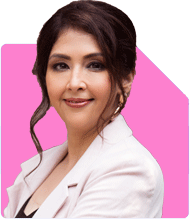Ramalingam Kalirajan |10881 Answers |Ask -Follow
Mutual Funds, Financial Planning Expert - Answered on Jul 10, 2025
He has an MBA in finance from the University of Madras and is a certified financial planner.
He is the director and chief financial planner at Holistic Investment, a Chennai-based firm that offers financial planning and wealth management advice.... more

Sir, I'm 41 with a 7 year old kid. My husband is currently not working. I have a net monthly income of 2L. We own a flat so there is no rental except for monthly maintenance charges. Apart from that that I save 50k in RD (2L till now). Rest goes for house hold expenses. In savings, I have, 1.5 L in NPS which I don't want to put more anymore. 3.5 L in large cap and mid cap stocks ,1.6 L in mutual fund one time investment, Around 9L worth of investment in SGB (maturing in 2028 and maturity amount will be approx 13 to 15L), 50L in my company stocks And 10 L in bank fixed deposit. I'm thinking whether I should stop my monthly 50K RD and do a SIP in midcap instead for 5 years? With job volatility what would be a best and safe way to get more returns.
Income, Expense and Surplus Evaluation
– Your net monthly income is Rs. 2L
– Household expenses plus maintenance consume about Rs. 1.5L
– You save Rs. 50K in RD monthly, which is structured and disciplined
– Your spouse is not working, so you are the sole earner
– This increases the importance of cash flow and risk cover
– With one child aged 7, you will have education needs in next 10–12 years
– Your savings rate of 25% (Rs. 50K monthly) is good
– But returns from RD are too low for long-term goals
– RD gives safety but not growth
– We need to rebalance towards high-return avenues
Existing Investment Review
##Recurring Deposit
– You have Rs. 2L already saved in RD
– RD offers fixed but low returns, taxable as per your slab
– It is safe but not useful for wealth creation
– Not suitable for medium to long-term goals
– You may stop new RDs now
– Existing RD can be allowed to complete its term
– Use that corpus later for emergencies or as lump-sum
##Mutual Fund One-time Investment
– You have Rs. 1.6L in mutual funds
– It shows good intention to diversify
– You haven’t mentioned the fund type, but equity allocation is useful
– This fund should be reviewed periodically for performance
– You can continue to hold or switch based on planner’s review
##Stocks – Company and Others
– Rs. 3.5L in large-cap and mid-cap stocks shows active investing
– Also Rs. 50L in your company’s stock is significant
– Stocks are risky, especially when concentrated in one company
– If your salary and investment depend on same company, risk is doubled
– This creates vulnerability during market downturn or job change
– Gradually reduce your exposure in company stock
– Redeem in parts when possible and reinvest in diversified funds
– Keep company stock below 10–15% of your total assets
– That protects you from overdependence
– Don’t increase direct stock exposure further unless you track markets regularly
– Use actively managed mutual funds instead
##Sovereign Gold Bonds (SGBs)
– Rs. 9L in SGBs is well-placed for diversification
– Maturity in 2028 will likely fetch Rs. 13–15L
– SGBs are safe, government-backed, and tax-free on maturity
– This gives protection against inflation in gold
– No action needed here. Continue to hold till maturity
##NPS
– You have Rs. 1.5L in NPS but don’t want to invest more
– That is acceptable
– NPS gives long-term retirement income but has lock-in till 60
– Withdrawal is restricted and not fully flexible
– You can keep existing funds but stop new investment
– Direct mutual fund SIPs are better for long-term growth with liquidity
##Fixed Deposit
– Rs. 10L in FD gives you safety and liquidity
– It acts as a good emergency buffer
– You don’t need to increase FD unless job situation changes
– FD returns are also taxed, so not ideal for growth
– Use it mainly for emergencies and temporary parking
Goal Planning for Child and Retirement
– Your child is 7 now
– Higher education cost will come up in 10–12 years
– You need to build a dedicated fund for that
– You should start a SIP for minimum 5–7 years
– Use only actively managed equity mutual funds
– Mid-cap or flexi-cap categories can work best
– Avoid index funds—they only copy markets and don’t adjust in downturn
– Active funds have better flexibility and professional management
– They outperform in long run with the help of fund managers
– Direct plans may look cheaper but offer no help
– In tough markets, direct investors often stop SIPs
– That spoils long-term goals
– Go for regular plans through a Certified Financial Planner
– You get reviews, guidance, portfolio adjustments and goal tracking
– A Rs. 50K SIP for 5 years can create a strong child corpus
– You may increase SIP after 1–2 years if your income allows
– For retirement, continue existing funds in mutual funds and NPS
– Also, slowly shift out of your company stock
– Reinvest in equity and hybrid mutual funds
– This will give more stable growth
Safety and Risk Management
##Job Volatility and Income Protection
– You are the only earning member
– Your child and husband depend on you fully
– So you must protect income and stability
– First, ensure you have 6–9 months’ expenses as emergency fund
– You already have Rs. 10L in FD, which can be used for this
– Don’t touch this FD for investment
– Next, ensure term insurance is active
– You must have at least Rs. 1 crore term insurance
– If not taken yet, buy it urgently
– Avoid LIC or traditional insurance for this
– Buy pure term cover with low premium and high sum assured
##Health Insurance
– You didn’t mention personal health insurance
– Do not rely only on company insurance
– Buy separate Rs. 10L floater policy for yourself and family
– Choose a plan with maternity, child cover, and critical illness options
– Medical inflation is rising every year
– A hospitalisation can wipe out years of savings
– Health cover protects both income and savings
SIP vs RD – What Works Better
– RD is useful only for safety and short goals
– But it gives low returns and is taxable fully
– Mutual funds offer higher growth for medium to long term
– You want to shift Rs. 50K RD to SIP for 5 years
– Yes, that is a wise decision
– SIPs will create more wealth with compounding
– Start with mid-cap or flexi-cap funds via regular plan
– Stay invested for full term
– Don’t stop SIPs during market fall
– Use planner’s help to review every 6 months
– Mutual fund SIP builds discipline, just like RD
– But gives much better returns over time
– Also gives flexibility to increase or reduce
Investment Mistakes to Avoid
– Avoid investing more in company stock
– Don’t invest in index funds—they don’t offer active management
– Don’t go for direct mutual funds—they lack guidance
– Don’t buy ULIPs or traditional child plans—they mix insurance and investment
– Don’t overexpose to FDs beyond emergency needs
– Avoid chasing high-return tips or unknown stocks
– Follow structured asset allocation
– Equity for growth, debt for stability, gold for hedge
– Review and adjust based on market and goals
Finally
You are managing things well with discipline. Your savings are structured. You have diversified investments.
But now, you must shift focus from safety to growth. RD is safe, but too slow. Mutual fund SIPs will help you grow wealth.
Stop RD and start SIP of Rs. 50K for 5 years. Use only actively managed funds. Avoid direct and index options.
Make sure you have term insurance and health cover in place. Use your company stock gains smartly. Reduce holding gradually.
This combination will give you growth, safety, and flexibility. You can achieve all future goals with this balanced strategy.
Best Regards,
K. Ramalingam, MBA, CFP,
Chief Financial Planner,
www.holisticinvestment.in
https://www.youtube.com/@HolisticInvestment
You may like to see similar questions and answers below
Ramalingam Kalirajan |10881 Answers |Ask -Follow
Mutual Funds, Financial Planning Expert - Answered on Apr 17, 2024
Ramalingam Kalirajan |10881 Answers |Ask -Follow
Mutual Funds, Financial Planning Expert - Answered on May 08, 2024
Ramalingam Kalirajan |10881 Answers |Ask -Follow
Mutual Funds, Financial Planning Expert - Answered on May 14, 2024
Ramalingam Kalirajan |10881 Answers |Ask -Follow
Mutual Funds, Financial Planning Expert - Answered on May 13, 2024
Dr Dipankar Dutta |1839 Answers |Ask -Follow
Tech Careers and Skill Development Expert - Answered on Dec 13, 2025
Dr Dipankar Dutta |1839 Answers |Ask -Follow
Tech Careers and Skill Development Expert - Answered on Dec 13, 2025
Mayank Chandel |2575 Answers |Ask -Follow
IIT-JEE, NEET-UG, SAT, CLAT, CA, CS Exam Expert - Answered on Dec 13, 2025
Radheshyam Zanwar |6742 Answers |Ask -Follow
MHT-CET, IIT-JEE, NEET-UG Expert - Answered on Dec 13, 2025
Mayank Chandel |2575 Answers |Ask -Follow
IIT-JEE, NEET-UG, SAT, CLAT, CA, CS Exam Expert - Answered on Dec 13, 2025
Mayank Chandel |2575 Answers |Ask -Follow
IIT-JEE, NEET-UG, SAT, CLAT, CA, CS Exam Expert - Answered on Dec 13, 2025
Kanchan Rai |646 Answers |Ask -Follow
Relationships Expert, Mind Coach - Answered on Dec 12, 2025
Ravi Mittal |677 Answers |Ask -Follow
Dating, Relationships Expert - Answered on Dec 12, 2025
Ramalingam Kalirajan |10881 Answers |Ask -Follow
Mutual Funds, Financial Planning Expert - Answered on Dec 12, 2025
Ramalingam Kalirajan |10881 Answers |Ask -Follow
Mutual Funds, Financial Planning Expert - Answered on Dec 12, 2025
























